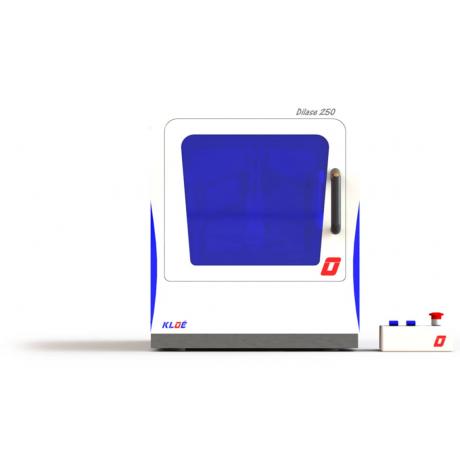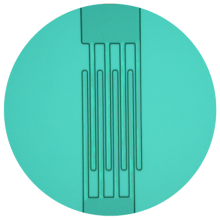CIRIMAT Toulouse - Isabelle PASQUET
Selective Laser Decomposition of Silver Oxalate: A New Way of Preparing and Shaping Metallic Silver Patterns
A new process using the selective decomposition of silver oxalate is presented and applied to the production of transparent electrodes on a polymer substrate. It is indeed shown that the silver oxalate Ag2C2O4 can be reduced to the metallic silver state by the focused laser beam of a photolithography machine (λ = 405 nm, spot size 5 μm, power between 3 and 100 mW). Thin lines of silver of width close to 15 μm, for optimized insolation conditions, can thus be directly and easily, formed in a layer of oxalate deposited by spin coating on polycarbonate substrate. Since the metal and the oxalate are of very different chemical natures, the residual oxalate is dissolved by an ammoniacal solution without affecting the metal. The silver conductive lines have a very porous vermicular type microstructure which, however, ensures electrical conductivity. The resistive effects, which result from this not very compact filament organization, can be reduced by simply applying a uniaxial mechanical pressure perpendicular to the plane of the substrate. This operation irreversibly reduces the porosity by crushing the silver strands. One by one-centimeters samples with an electrical resistance of 10 Ω and an optical transparency of 95% (after correcting the effects of the substrate) were thus prepared. Their factor of merit expressed by (Transparency550nm)10 / Rpattern, close to 0.059 Ω−1, is at the state of the art. The selective decomposition of silver oxalates by a laser beam is therefore a very interesting way to easily make transparent conductors made of thin metallic patterns.

